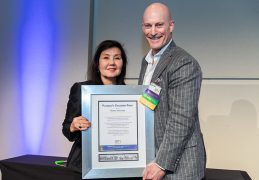Savings Quick Tips
Saving money is not always an easy affair, especially when it comes to creating an emergency fund (either while still in school or once we have graduated). It usually does not happen very quickly and figuring out the best process that is effective for each of us can be quite a challenge. In my conversations with students over the last few years, I have tried to stockpile a few of the simpler, applicable tips that THEY have used to reach their own savings goals. As I always tell students, you have to find something that works best for you and helps you mitigate some of your spending behaviors to be successful.
Building an emergency savings may seem daunting and not very fun. With a little creativity and discipline, you can successfully reach your savings goals without completely stretching your financial limits.
Here are a couple of ideas that I have heard from our students in the last few years:
- The “No Excuses” Box
I believe this student referenced Dave Ramsey (www.Daveramsey.com) when they explained it to me, but it seemed to be effective. This individual decided to modify two of their spending habits; going out for coffee and buying lunch when they already had lunch items available. Placed by the front door and next to the car keys was a small box with “No Excuses” written across it. When the student thought of going to buy a cup of coffee $5 was added to the No Excuses box, and coffee was made at home. The same process was used for thoughts of going out for lunch. Put $5 in the box, go back to the kitchen and make some lunch. (Of course having gone grocery shopping helps, so make sure that’s in your budget and you have coffee and lunch items on the list!)
- The Lunch Envelope
The average cost of eating a lunch out is around the $10 mark. That can add up to quite a cost if you spent $10 on a daily basis for lunch out, 5 days a week, 52 weeks a year! So maybe we cut going out to lunch by 2 days a week. On the 2 days you don’t go out, take a $10 bill, to represent what you would have spent on lunch out, and place it in an envelope. By physically putting the money in the envelope, you are actively demonstrating your savings behavior. Maintaining this process over the course of one year can lead you to around $1,000 in your envelope! Well on your way to an emergency fund if that’s your goal, or whatever savings goal you had in mind.
- The Piggy Bank
If you spend in cash, you are bound to have loose change laying around in the bottom of your purse, the console of your vehicle, or on top of your dresser. Put it in a piggy bank of some sort; whether it is an actual “piggy” bank, an empty mason jar, coffee tin, 2-liter bottle, or 5 gallon water bottle. Whatever you like best, use. All of those pennies, nickels, dimes, and quarters will add up! At the end of the year you have the makings of an emergency fund built, maybe it’s a Christmas shopping fund, or a vacation fund. Something to get you started!
If you ONLY us a debit card, see if your financial institution has a “keep the change” program where each debit card purchase is rounded up to the next dollar with the rounded amount put into a savings account for you. If your bank does not, there are apps available with savings programs such as Acorns, Stash, or Robinhood that allow you to the rounding up and saving of your spare change on your own. (Be sure to read and understand the disclosures of any app or savings plan you enter.)
- $5 Bills
One student explained to me that every $5 bill they came across was put into an envelope, headed towards a savings account. This individual used cash more than the debit card so whenever a $5 bill was handed back as change, they decided that might be a great way to create some “forced” savings for things like emergencies or Christmas.
Regardless of what methods work best for you, a little creativity, some discipline and planning, can set you up for success with creating savings that have previously eluded you. Find something that works for you and your behaviors, and will see your savings begin to grow. It will take some time, but the more you do it the small steps become larger ones and you will find yourself closer to reaching your financial goals!
Please feel free to contact me if you have any questions or need additional assistance. I can be reached at (904) 296-3440 extension 139, or [email protected].






 My instructors believed in me. They were more than instructors, they tried to get to know you as a person and tried to understand your goals so they could push you towards them. Student services helped me find a job before I even graduated. Everyone was dedicated to my overall success.
My instructors believed in me. They were more than instructors, they tried to get to know you as a person and tried to understand your goals so they could push you towards them. Student services helped me find a job before I even graduated. Everyone was dedicated to my overall success.
